Best
2.0 Clarinet Reed
-
Overall: Made with D'Addario's exclusive process for precise cutting and sanding on each rico reeds
-
Best Feature: Economically priced for all players.
-
TedScore™: 8/10
Best
3.0 Clarinet Reed
-
Overall: High-performing Bb clarinet reed with over a century of design expertise.
-
Best Feature: Traditional vandoren reeds with a thin tip and thick heart.
-
TedScore™: 9/10
Best
3.5 Clarinet Reed
Cut Bb Clarinet
Reed Durable and consistent
-
Overall: Delivers a deliciously dark, deep,
and centered sound. -
Best Feature: Optimized stability, response, and resistance.
-
TedScore™: 9/10
When I first held my clarinet, my fingers were practically jittering with excitement. I did not realize that the clarinet reed size for beginners would be the secret to a smooth start.
I quickly discovered that using a size 2 or 2.5 reed is like the magic wand for your clarinet, making it easier to produce sound, mainly when your mouth is still getting used to playing.
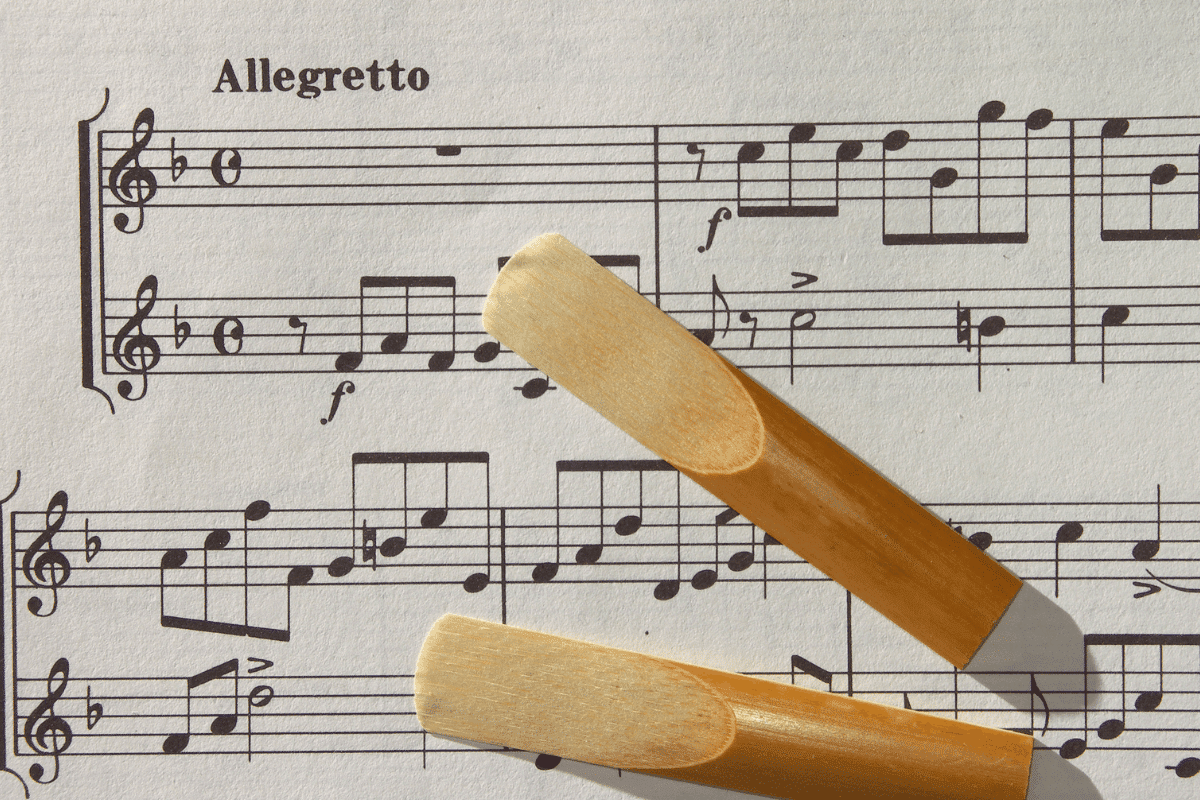
Keep reading, and I’ll share all the secrets about picking the right reed size so that your clarinet’s sound is beautiful and not like a honking goose. Get your clarinet, and let’s explore reeds together!
Understanding Clarinet Reed Basics
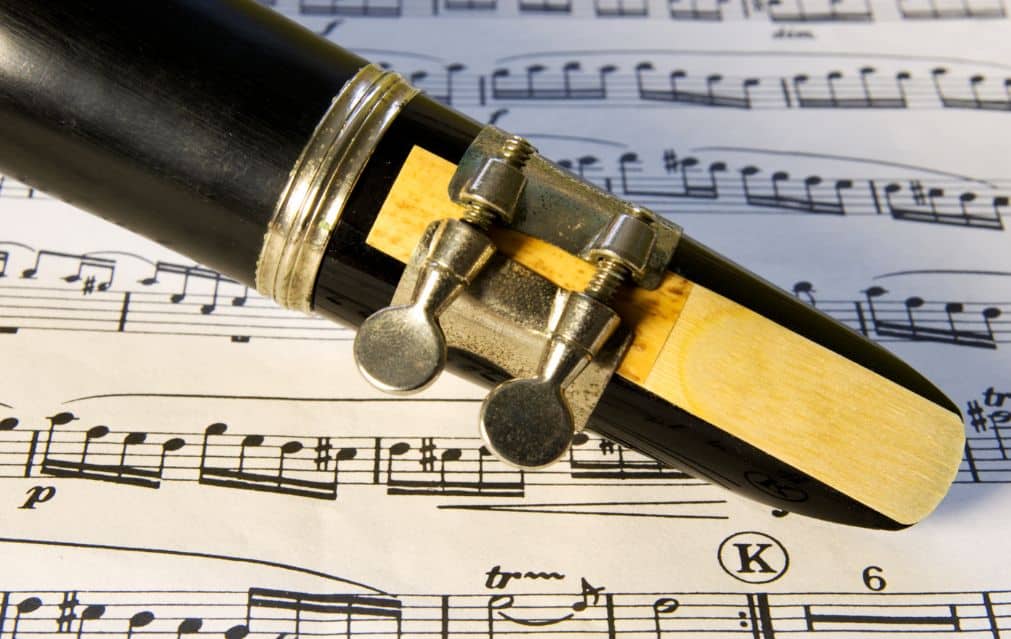
Before you start your clarinet journey, it’s crucial to understand that your reed is the soul of your sound.
Finding the right clarinet reeds for beginners can be a bit of a mystery when you’re just starting out, but don’t worry—I’ll walk you through the basics.
Reed Size and Strength Explained
We’re referring to the reed’s strength or thickness when talking about reed size. The strength ranges from 1 to 5, with higher numbers thicker and offering more resistance.
Most beginners start with a size 2 or 2.5 reed, as they are easier to handle and make playing notes correctly a tad less challenging.
A good rule of thumb is that a softer reed often translates to a more effortless playing experience. However, as you build up your embouchure – the fancy term for your mouth muscles – you’ll likely want to explore reeds of varying strengths.
Top Clarinet Reed Brands
D'Addario RCA1025 Rico Bb Clarinet Reeds
D’Addario RCA1025 Rico Bb Clarinet Reeds offer consistent quality and reliable performance for clarinet players of all levels. With their balanced sound and easy response, these reeds are an excellent choice for practice and performance.
D'Addario RCA1025 Rico Bb Clarinet Reeds
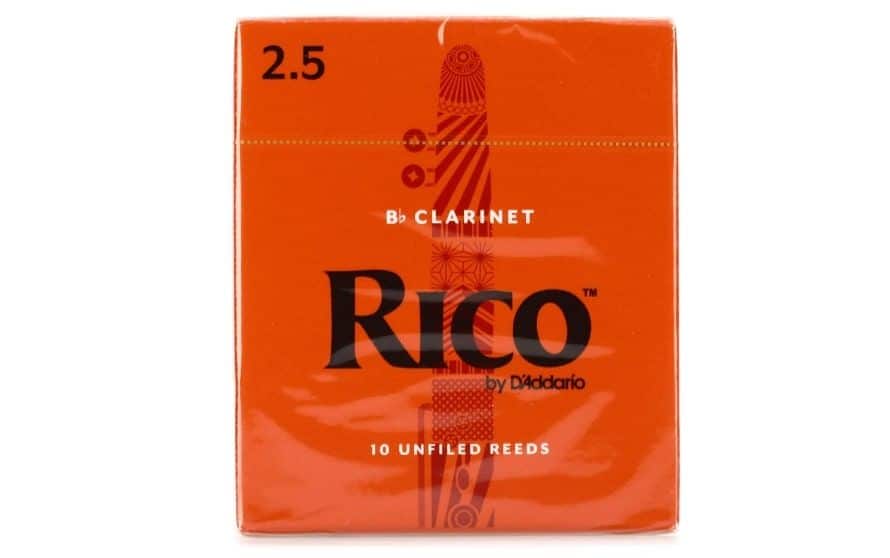
FEATURES: Made with D'Addario's exclusive process
for precise cutting and sanding on each rico reeds.
OTHER INFO: Made from high-quality cane
from France and Argentina.
- Economically priced for all players.
- It may be too soft for advanced players.
When you click ‘Check Price’, you’ll see there are loads of great places to buy this item. Our personal favorite is Sweetwater for the US, and Thomann and Gear4Music for the UK & Europe.
They are the largest music retailers, with excellent customer service, competitive prices, really fast shipping, and the longest guarantees.
The professional musician who wrote this article combined many things,
from the product build, manufacturer’s reputation through to feedback
from other users, to create our famous TedScore™.
Vandoren CR103 Traditional Bb Clarinet Reed
Vandoren CR103 Traditional Bb Clarinet Reeds are a favorite among professional and advanced clarinet players due to their exceptional quality and consistency. These reeds offer a rich, warm tone and excellent response, making them suitable for various musical styles and playing techniques.
Vandoren CR103 Traditional Bb Clarinet Reed
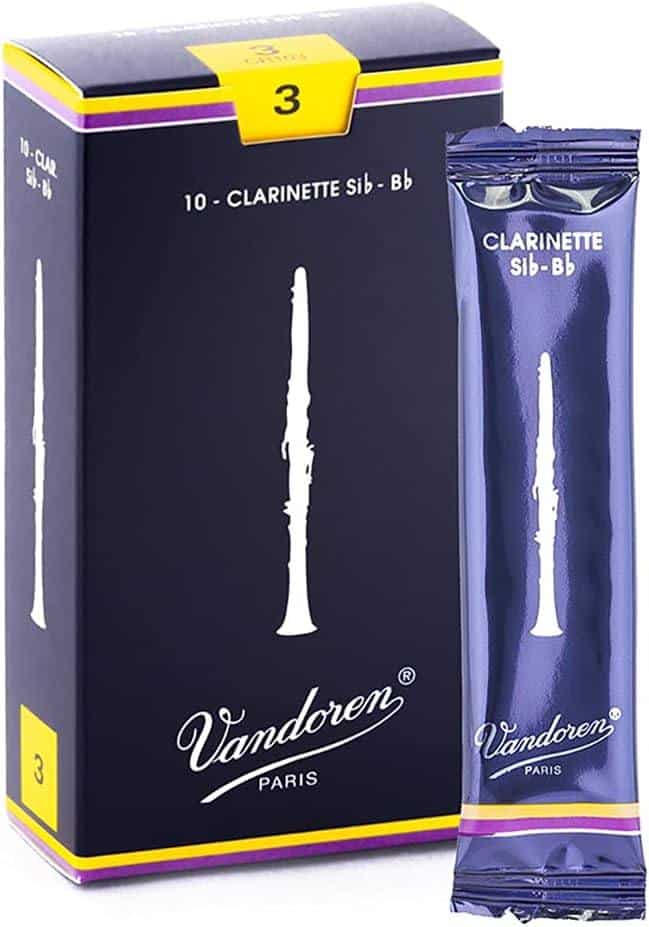
FEATURES: High-performing Bb clarinet reed
with over a century of design expertise.
OTHER INFO: Traditional vandoren reeds
with a thin tip and thick heart.
- It allows for intricate, articulate playing up high and down low.
- It may require more embouchure strength and breath support.
When you click ‘Check Price’, you’ll see there are loads of great places to buy this item. Our personal favorite is Sweetwater for the US, and Thomann and Gear4Music for the UK & Europe.
They are the largest music retailers, with excellent customer service, competitive prices, really fast shipping, and the longest guarantees.
The professional musician who wrote this article combined many things,
from the product build, manufacturer’s reputation through to feedback
from other users, to create our famous TedScore™.
Legere French Cut Bb Clarinet Reed
Legere French Cut Bb Clarinet Reeds are a synthetic alternative to traditional cane reeds, offering consistent performance and durability. With their responsive and balanced sound, these reeds are an excellent choice for clarinetists looking for a reliable, long-lasting option that maintains its quality over extended playing sessions
Legere French Cut Bb Clarinet Reed
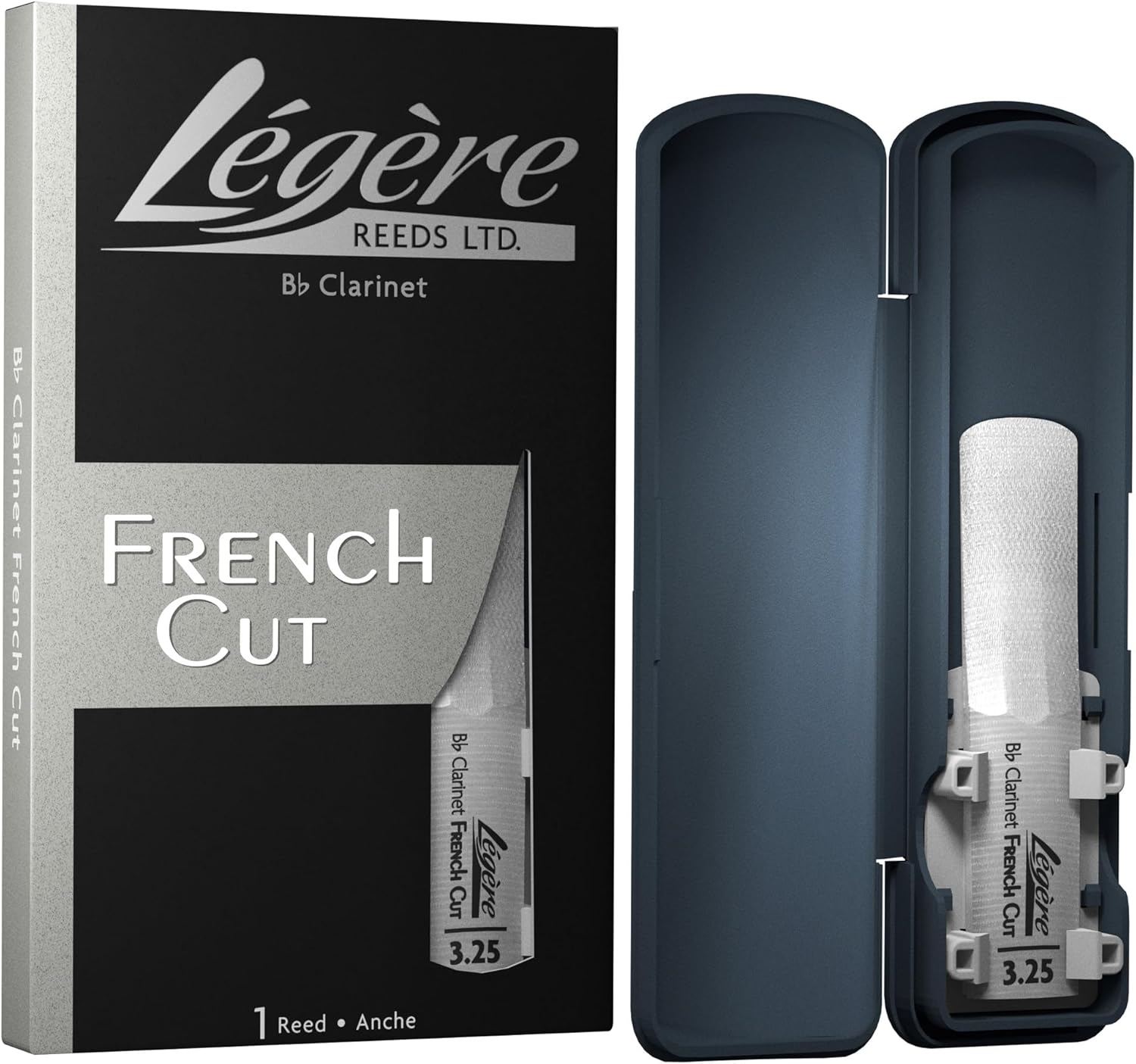
FEATURES: Delivers a deliciously dark, deep,
and centered sound.
OTHER INFO: Optimized stability,
response, and resistance.
- Great for classical and other genres requiring a rich, full tone.
- It may produce a more powerful and robust sound.
When you click ‘Check Price’, you’ll see there are loads of great places to buy this item. Our personal favorite is Sweetwater for the US, and Thomann and Gear4Music for the UK & Europe.
They are the largest music retailers, with excellent customer service, competitive prices, really fast shipping, and the longest guarantees.
The professional musician who wrote this article combined many things,
from the product build, manufacturer’s reputation through to feedback
from other users, to create our famous TedScore™.
The Role of Materials in Reed Selection
Traditional reeds come from cane, but synthetic reeds are also available. These modern marvels are made from plastic compounds and are praised for their durability and consistency.
If you often snapping those delicate cane reeds, you should give synthetic ones a whirl. They don’t need to be moistened before playing, which is a bonus.
However, some folks argue that the tone from a cane reed is unmatched. So, it might boil down to trying both and seeing which suits your ears and style better.
How Reed's Choice Impacts Sound and Playability
Picking the right reed affects how you play and the quality of sound that woos your audience. A soft reed lends itself to a vibrant, responsive sound perfect for novices still perfecting their technique.
As for the more advanced music sheet gymnastics, a harder reed can provide that additional control.
The tip opening of your clarinet mouthpiece also plays a role here. A larger tip opening usually pairs better with a softer reed. Add a French file cut to your reed, and you’ll find it’s easier to produce a clear and articulate tone.
Remember, it’s all about the right combination to make your clarinet sing in tune with your musical voice.
Starting Off on the Right Note
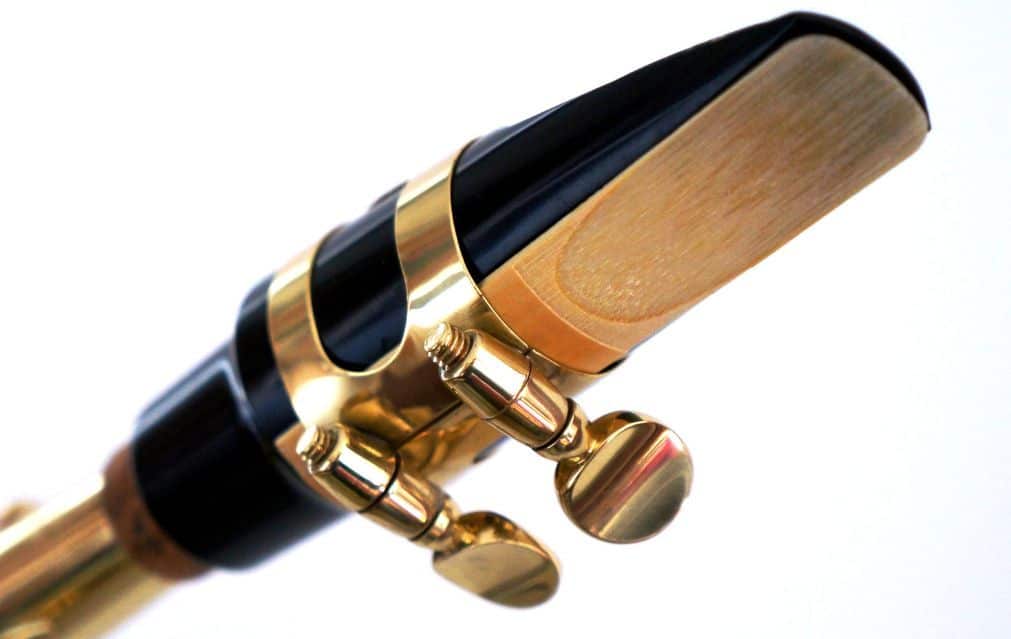
When I first picked up the clarinet, I quickly learned that my reeds were as crucial as the clarinet itself. They’re the soul of our sound, so let’s make sure we treat we’re them right.
Caring for and Maintaining Your Reeds
My teacher always reminds me that caring for reeds is caring for my sound.
Choosing the right reed as a beginner can feel daunting, but let’s keep it simple: a soft reed, usually sized between 2 and 2.5, is a kind friend to start with. It’s gentle on our embouchure (how we use our mouth and lips to play) and forgiving while we learn the ropes.
I’ve learned a neat trick: I rotate my reeds to ensure they all wear evenly. I keep three to four reeds handy in my reed holder, and each time I play, I use a different one.
This gives each reed ample time to rest and dry, which is key to longevity.
Waiting for reeds to break in naturally is a test of patience, but it’s worth the wait. Using them gently at first allows them to mold to my playing style.
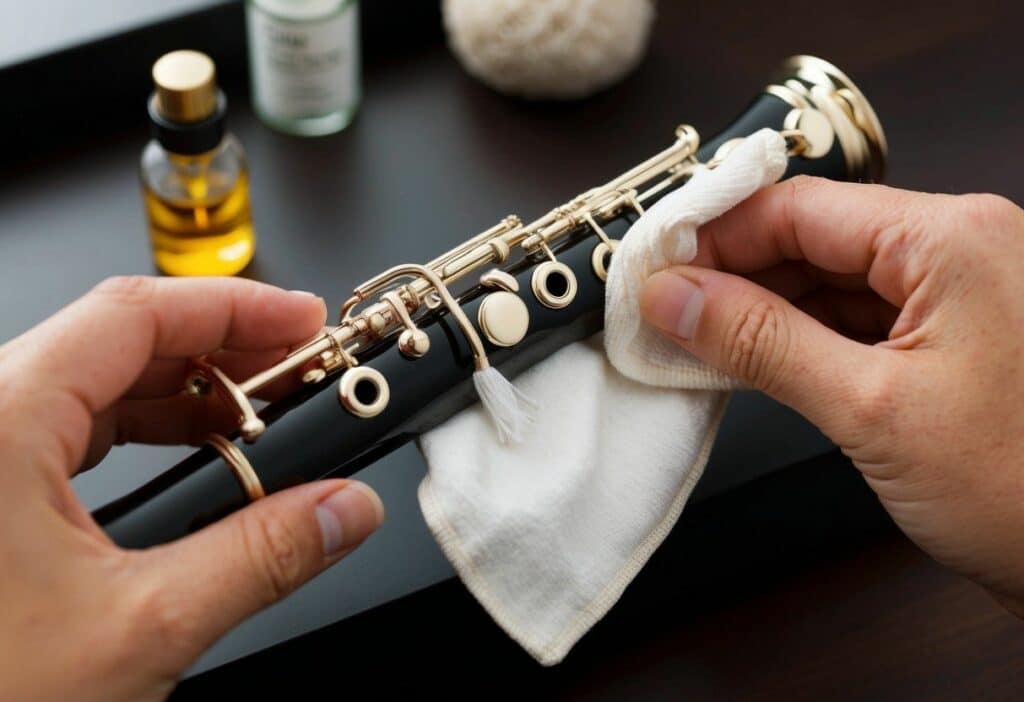

However, I might give it light sanding if a reed feels slightly off. But I never get carried away; too much, and it’s a one-way ticket to Reed Heaven.
Moisture can be a reed’s worst enemy or best friend. I ensure my reeds are moist enough to be pliable but not so wet that they warp. Before playing, I always give my reeds a brief soak in lukewarm water – the spa treatment they deserve.
Now, I keep a Vandoren Juno or two in my case; they’re crafted specifically for us beginners. They make the first notes a dream and have a cheerful way of saying, “Welcome to the clarinet family!
Remember, reeds are perishable – shocking, I know. I replace mine before they show signs of fatigue. A lifeless reed makes for a dull sound; we wouldn’t want that!
And let’s not overlook the accessories that keep our reeds safe: a sturdy ligature that holds the reed snugly against the mouthpiece and a good reed case to shield them from the perils of the outside world.
Trust me, it’s the little things that make a big difference in our clarinet journey!
Clarinet Size For Beginners:
Important Insight
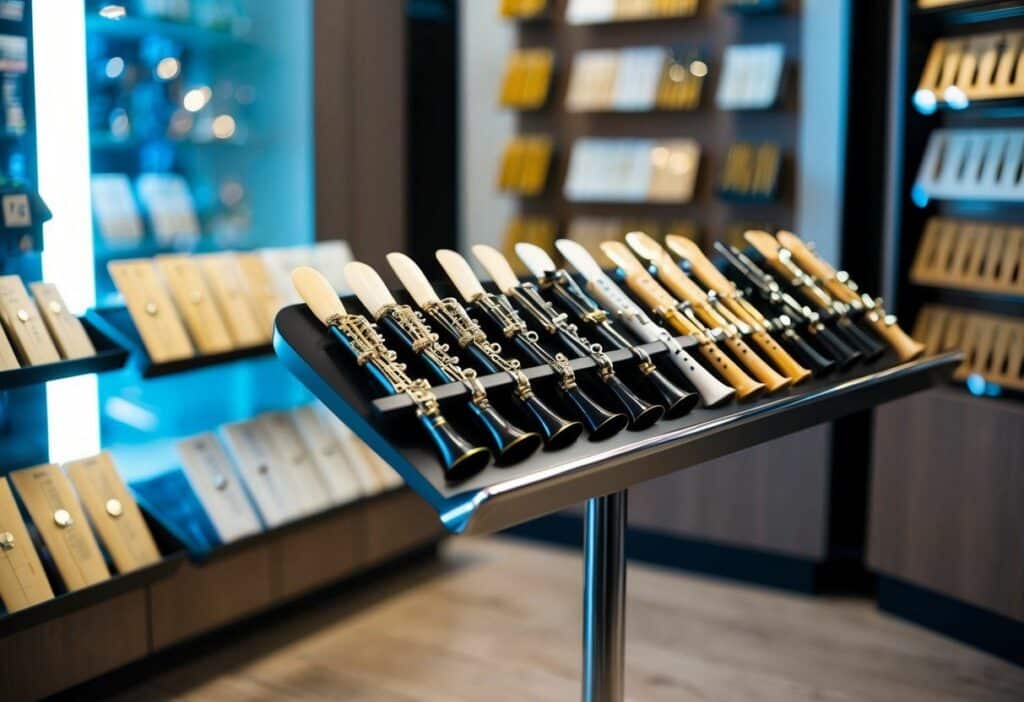
Choosing the right clarinet reed strength is crucial for my journey into the clarinet world. The size 2 or 2.5 is an excellent starting point, offering a wonderfully balanced response and tone.
These softer reeds are forgiving for my embouchure and simpler to play, making my initial practice sessions both rewarding and enjoyable. The harder reeds are for greater sound clarity and control as you progress.
The number system, with sizes typically from 1 to 5, is a reliable guide for you to follow as you improve. The thickness and strength of the reed greatly influence the performance quality and ease of play.
The key to a harmonious start is finding a reed that feels like a friend – not a foe – to my musical aspirations. So, here’s to the musical beginnings and the many cheerful tunes that lie ahead on my clarinet adventure!
FAQ's
For beginners, starting with a softer reed, typically around a strength of 2 or 2.5, is generally recommended. A softer reed requires less air pressure to produce sound, which can be helpful as beginners develop their embouchure and breath control.
A 2.5 reed can be suitable for beginners as it balances ease of play and control, but the ideal reed strength may vary for each individual based on factors like embouchure strength and mouthpiece setup.
For beginners, a reed size around 2 or 2.5 is often recommended. It balances ease of play and control, allowing beginners to develop their embouchure and breath control while producing a good tone.
A thicker reed for the clarinet, such as a higher strength, like 3 or 3.5, can provide a fuller and more robust sound. Thicker reeds also offer more excellent resistance, benefiting experienced players seeking more control and flexibility in their playing










